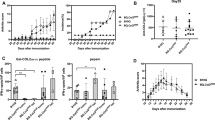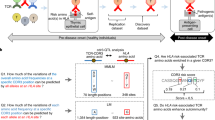Abstract
The ability to develop type II collagen (CII)-induced arthritis (CIA) in mice is associated with the major histocompatibility I-A gene and with as yet poorly defined regulatory molecules of the major histocompatibility complex (MHC) class II antigen processing and presentation pathway. H2-M molecules are thought to be involved in the loading of antigenic peptides into the MHC class II binding cleft. We sequenced H2-Ma, H2-Mb1, and H2-Mb2 genes from CIA-susceptible and -resistant mouse strains and identified four different Ma and Mb2 alleles and three different Mb1 alleles defined by polymorphic residues within the predicted peptide binding groove. Most CIA-resistant mouse strains share common Ma, Mb1, and Mb2 alleles. In contrast, H2-M alleles designated Ma-III, Ma-IV, Mb1-III, and Mb2-IV could be exclusively identified in the CIA-susceptible H2 r and H2 q haplotypes, suggesting that allelic H2-M molecules may modulate the composition of different CII peptides loaded onto MHC class II molecules, presumably presenting “arthritogenic” epitopes to T lymphocytes.
Similar content being viewed by others
Author information
Authors and Affiliations
Additional information
Received: 8 December 1995 / Revised: 16 January 1996
Rights and permissions
About this article
Cite this article
Walter, W., Loos, M. & Maeurer, M. H2-M polymorphism in mice susceptible to collagen-induced arthritis involves the peptide binding groove. Immunogenetics 44, 19–26 (1996). https://doi.org/10.1007/s002510050085
Issue Date:
DOI: https://doi.org/10.1007/s002510050085




